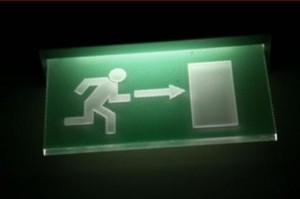 I had two models in mind when I had to start writing the ending to the taxidermy book. One was Eggers’s Frisbee-throwing soaring prose at the end of A Heartbreaking Work, and the other more pressing influence (my book’s practically dripping with it) was Rick Moody’s The Black Veil, with its incantations of black and blacknesses. I guess I wanted a huge buildup of feeling, and then a kind of slap in the face. I’m proud of it, the ending, but I don’t think I want to write those kinds of endings anymore.
I had two models in mind when I had to start writing the ending to the taxidermy book. One was Eggers’s Frisbee-throwing soaring prose at the end of A Heartbreaking Work, and the other more pressing influence (my book’s practically dripping with it) was Rick Moody’s The Black Veil, with its incantations of black and blacknesses. I guess I wanted a huge buildup of feeling, and then a kind of slap in the face. I’m proud of it, the ending, but I don’t think I want to write those kinds of endings anymore.
Lately I’ve been thinking about this stuff in terms of songs on records. There are songs that are Grand Endings. Radiohead’s “Motion Picture Soundtrack” for instance. Most of Bill Callahan’s final tracks. I interviewed him once, Bill Callahan, and he admitted to being proud of his sequencing on records, and though I don’t think I’ve ever said a bad thing about the guy I’ll say his sequencing is a bit too spot on. It’s so stuffily perfected, like a short story in a literary journal that comes from someone’s MFA thesis.
What’s weird is that Callahan’s got worse at this over the years (cf. Julius Caesar‘s “Stick in the Mud” to Apocalypse‘s “One Fine Morning”) while Radiohead seems to’ve gotten better. This whole idea came to me while listening to Hail to the Thief‘s “A Wolf at the Door” which is a shockingly good final track. It ends the record like a leaf blowing quickly off screen, as opposed to a slow pan skyward or a slow fade to black.
Another model ending: the final shot of Grey Gardens, Little Edie’s face spinning out of the frame. I’m hoping to write more endings like this, ones that sneak up on you and leave you bereft of something. Endings that, if they were a poem, wouldn’t even signal to listeners at your reading that it’s time to sigh audibly.
The best final track ever sequenced is the Pixies’ “Brick is Red” off Surfer Rosa.
In related news, I’m a big fan of the Irish goodbye.